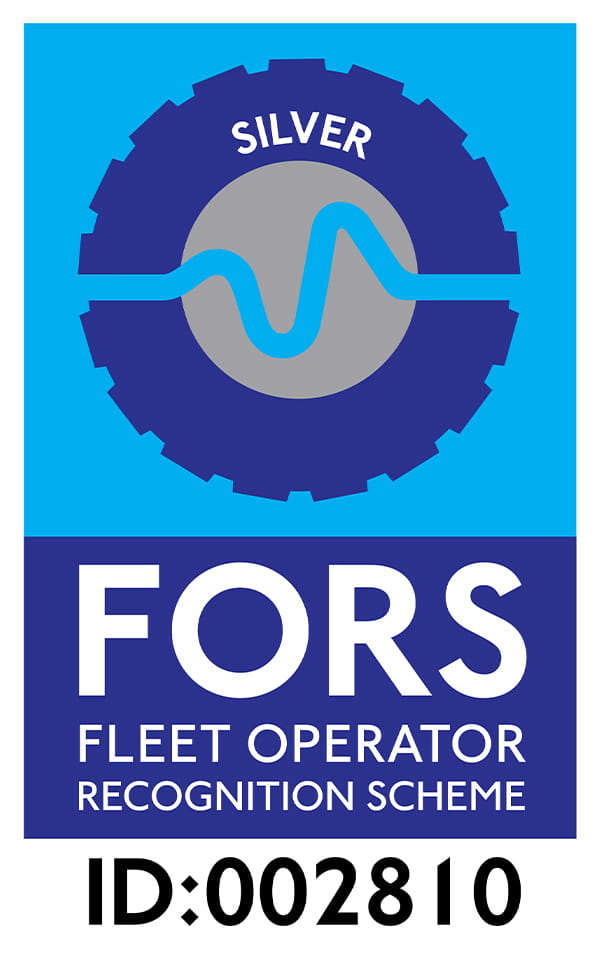Our other sites:
Sustainable School Fences and Gates
Sustainable School Fencing
Jacksons has been involved in the design and manufacture of fencing and gates since 1947.From nurseries, pre-schools, and primary schools, to secondary schools, colleges, and universities, Jacksons completes hundreds of school fencing projects each year.
All of Jacksons’ steel and timber fencing and gates are designed and manufactured to be fit for purpose and deliver a long service life while providing a low lifetime cost. We supply all of our timber and steel fencing with a 25 year guarantee.
Blog: BUILDING A SUSTAINABLE FUTURE WITH OUR 25 YEAR GUARANTEE
Process and practices
Sustainable Timber Fencing
The timber employed in the manufacture of Jacksons’ timber fencing and gates is specially selected from sustainable sources, and whenever possible, FSC and PEFC certified timber is used.
However, the use of sustainable timber only really makes sense to the environment if everything else is aligned. Starting from the selection of the right species of timber for its suitability to a given application, whether in the construction of a fence panel, gravel board, or post; the design of the finished product; the fixings used in its construction; the fittings attached to it; and of course the way the timber is treated to ensure a long service life.
Treatment ProcessJacksons 25 Year GuaranteesAre concrete fence posts good for the environment?
Concrete posts have long been used for timber and chain link fencing and many perceive that they are the lowest maintenance and most durable option available; and therefore, economical and good for the environment.
They are certainly heavy and inherently strong but as to their durability and environmental benefits, there a number of myths that should be debunked. Read our blog for more.
Sustainable Steel Fencing
It takes a great deal of energy to produce steel: involving the mining of ore, the smelting and rolling processes, and transportation and manufacturing to create the finished product. But once manufactured into steel fencing and gates, you should expect a long and largely trouble-free service life.
Unfortunately, that’s not always the case. As with timber, there are different types of steel and metals suited to different applications. In fencing and gates for example, the use of solid steel bar has largely been replaced by hollow section tubular steel which is not only lighter and less costly, but by using the correct specification and size of steel section, is stronger and more durable. It must be treated correctly, as rust destroys steel in the same way rot degrades timber.
To reduce cost, some manufacturers apply a primer/undercoat of red oxide or zinc rich coating on to bare metal to give a basic layer of corrosion protection. By way of contrast, the hollow steel sections used in a Jacksons fence or gate are hot dip galvanised inside and out to BS EN 1461 after manufacture, for total protection against rust; and if required, subsequently powder coated in a range of standard or special BS and RAL colours to BS EN 13438 at our own powder coating plant. If a fence or gate is to be used within 500 metres of an estuary or in a corrosive atmosphere, a ‘Marine Coating’ should be applied after galvanising for lasting protection against the elements.
request a Quote
Are you working on a school or playground project that requires fencing and gates? We have a wide range of welded mesh panels, vertical bar railings, sports fencing, and anti-trap, RoSPA approved playground safe solutions. Browse our product range or request a free, no obligation quote here.
School Security FencingProduct QuotePeace of mind installation service for schools:
Jacksons’ fencing, gates and access control projects for schools are priority scheduled to take place during the Easter, Summer and Christmas breaks to minimise disruption or compromise security during term time.
Installation by JacksonsRelated
We provide security fencing solutions for a wide range of educational establishments, from nurseries to universities. We have several pages focusing on areas of interest.
If you need help please contact our knowledgeable sales team.
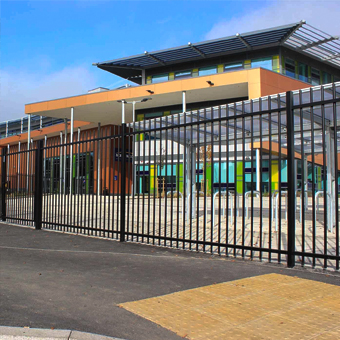
School Fencing Guide
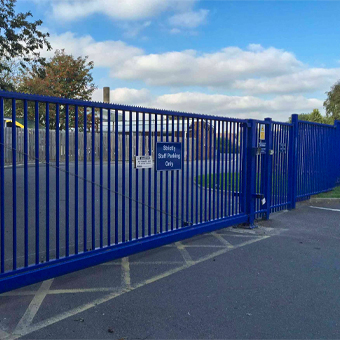
Automatic Gates at Schools
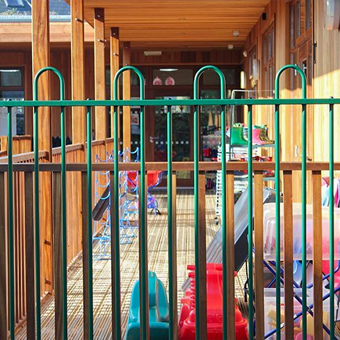
Best Practice for School Fencing and Gates
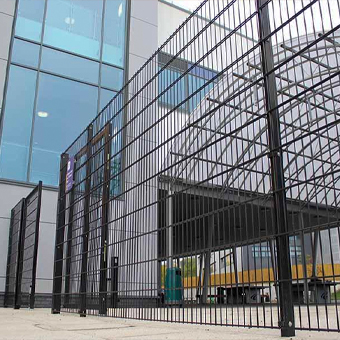
Fencing and Gates for Schools in Higher Risk Areas
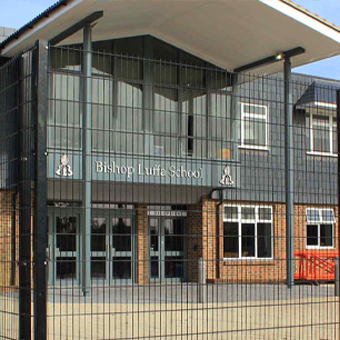
Choosing the Right Fencing in and Around School Grounds
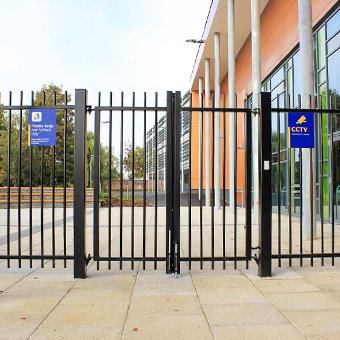
Creating a Safe and Secure School Environment
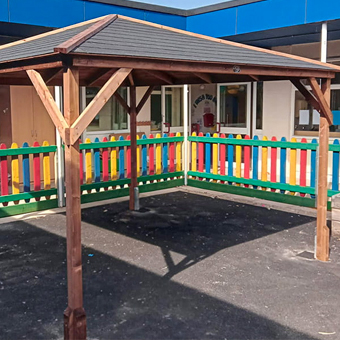
Is Your Playground Safe?
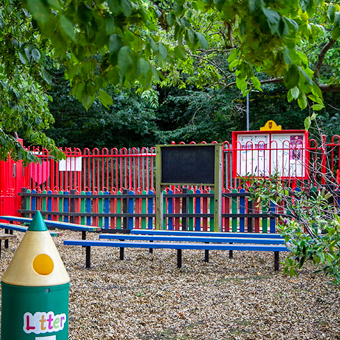
Outdoor Classrooms
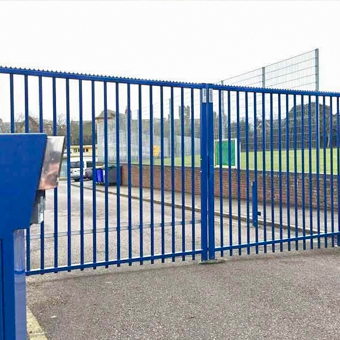
Playground Safety and Security
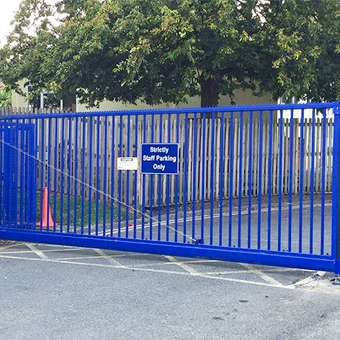
School Entrance Security Gates
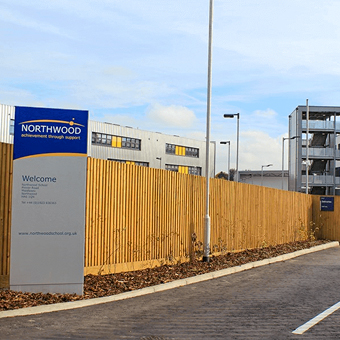
School Safety and Security
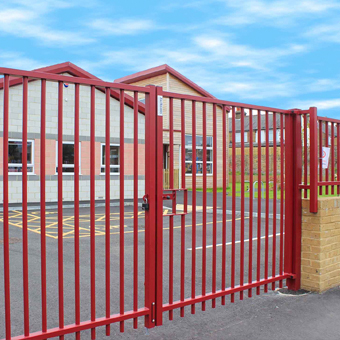
School Security - Its Beyond a Duty of Care
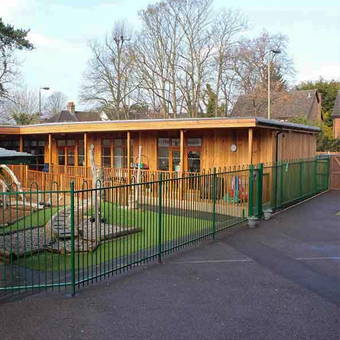
Sustainable School Fencing
Top

